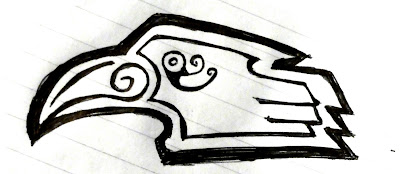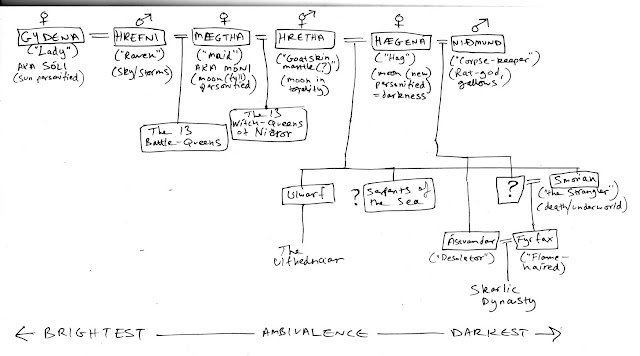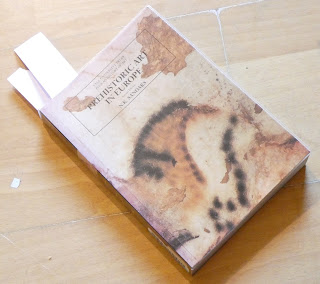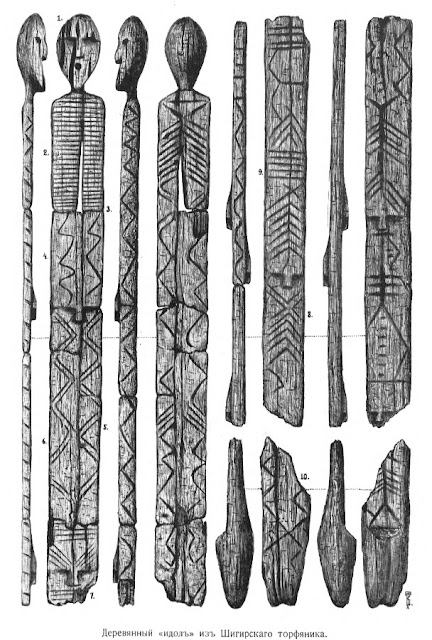Stone the Crow...

Apologies for the terrible title of today's post, but it made me smile. With the new chisel arriving this morning, I decided to get on straight away with the plan of making a first, tentative, small piece of inscription. I chose the schematic portrait of my storm-god Hrefni in his raven form: and sketched it onto a suitable sized piece of stone. Things began a bit heavy-handed as I've never handled a proper chisel in this way before, but it soon became clear that the relative softness of the stone (sandstone, I'm assuming, as it seems to be of a similar appearance to the local ancient monumental stones) allowed me to scratch quite heavily, using the edge of the chisel and no hammer, guidelines deep enough to allow the deeper hammered work to follow the correct path and not meander off on a journey of its own - which is what accounted for the very rough, jagged initial outlines: I gave up on the double outline idea as there wasn't enough space (with a bigger stone an...



